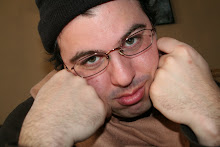Jaws instigated a series of “animals on a rampage” movies in the late 70s and early 80s: bears (Grizzly, 1976); whales (Orca, 1977); bees (The Swarm, 1978); bats (Nightwing, 1979). Universal Studios even attempted to recreate the magic (and mayhem) of its deadly great white shark with a murderous automobile in The Car (1977).
Of all the films to drop in on the wave of Spielberg’s benchmark blockbuster, few are as well-plotted and entertaining as Alligator. Scripted by John Sayles (who also helmed the terrific nature runs amok flick Piranha, 1978) and inspired by the urban myth that oversized alligators troll the New York sewer system, the film follows Chicago homicide detective David Madison (Robert Forester) and reptile expert Marisa Kendall (Robin Riker) as they pursue a man-eating gator that’s been terrorizing The Windy City.
Roger Corman disciple Lewis Teague captures the B-movie spirit of his mentor, offering heavy doses of tongue-in-cheek humor and breath-stealing terror in equal measure. From its unambiguous title and primitive score to its campy creature design and well-observed characters, Alligator delivers the low-budget goods.
Click here to read the full review: Celebrating 40 Years of Alligator

 JENNIFER HILLS
JENNIFER HILLS The picture commences in brutally disturbing fashion. Asa Vajda (Barbara Steele) and her illicit lover Javutich (Arturo Dominici) are branded disciples of the devil and sentenced to death. Spiked masks are hammered onto their faces by imposing men with swelling muscles and black hoods. Dark liquid pops from their mouths and eye holes and soaks into the cloth of their tattered clothes.
The picture commences in brutally disturbing fashion. Asa Vajda (Barbara Steele) and her illicit lover Javutich (Arturo Dominici) are branded disciples of the devil and sentenced to death. Spiked masks are hammered onto their faces by imposing men with swelling muscles and black hoods. Dark liquid pops from their mouths and eye holes and soaks into the cloth of their tattered clothes.